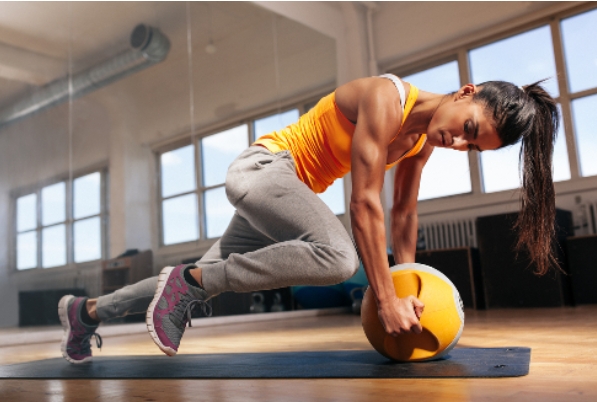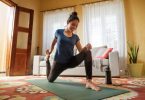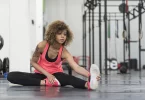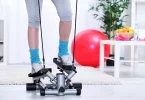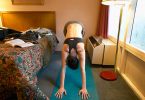Stretching has always been considered important to warm up before an agility sport, and now individuals are turning to assisted stretching techniques to relieve pain and enhance general health.
This highlights the importance of Active Isolated Stretching (AIS) routine for an athlete as well as individuals with sedentary lifestyle.
Routine sessions of AIS combined with 15 minutes of quality movement each day can reverse the indications of aging and allow you to enjoy a wide range of agility sports in a pain-free body.
Considering that, this blog entails some common AIS stretching exercises that every agility sport player must implement in their daily routine.
But first, let’s see.
What is Active Isolated Stretching
Active Isolated Stretching (AIS) is a muscle lengthening and strengthening therapy. Muscles have two primary functions: contracting and relaxing.
The goal of AIS is to hold a stretch for one to two seconds, relax, and then repeat the exercise for one to two sets of 10 to 15 repetitions. With each subsequent set of the stretch, you should be able to extend your range of motion.
Some of your muscles may feel short and constricted in some places of your body. Some muscles in your body may feel unusually loose, and you may be able to stretch and move them easily. That’s why it is vital to follow good AIS stretching routine such as:
AIS for the Foot and Ankle
Try the foot and ankle routine on one foot first, then stand up and see whether the change in both feet and ankles is noticeable.
Because most athletes focus on extending the main muscle groups, it’s easy to overlook the feet.
The foot and ankle routine, on the other hand, is a requirement, not a “nice to do,” and you should do it two or three times per week.
Abductors and adductors active isolated stretching
The abductors and adductors are two muscle groups that are frequently disregarded by runners.
You should eventually focus on strengthening these muscles, but first you must lengthen them in order for them to operate properly.
Stretching differs from one day to the next, as well as on each side of the body. So, don’t get discouraged if you feel tight in the first few minutes of AIS, and don’t be concerned if one side seems tighter than the other.
This information suggests that you need another easy day or two of running, but it would be even better if you could consult a soft tissue specialist to determine the core source of the imbalance.
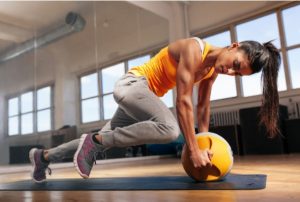
Other Common AIS Exercises
Increased isolated flexibility, lower risk of injury, body realignment, and enhanced awareness of your body are just a few of the advantages of adding AIS into your regimen. You should add the following exercises in your AIS stretching routine:
Single leg pelvic tilt
Bend your non-exercising knee while lying on your back. Place your hands behind your knee/thigh and bend your exercise knee.
Lift your exercising leg toward your chest with your abdominals and hip flexors until you can no longer go. Aim your knee toward your armpit and lightly help your leg with your hands at the conclusion of the stretch, but don’t pull.
Straight leg hamstring
Straight leg AIS hamstring stretch is a straightforward exercise. Take the leg that is being stretched and lift it straight up as though you are aiming for a 90-degree angle after you are fully reclined on the apparatus.
The bottom of your foot should be pointed in the direction of the ceiling. Many people will struggle to achieve 90 degrees at first, but the more you do it, the more astounded you will be at what your body is capable of.
Hold the leg up for two seconds after lifting it and stretching the hamstring at your first point of resistance before gently lowering it and repeating the exercise.
Gastrocnemius
Flex your foot aiming it back toward your ankle from the heel, with both legs stretched out in front of you. Then return it to its starting position after two seconds of holding it in place before starting over.
Bent leg hamstring
Lie down on your back, knees bent and feet flat on the floor. Make a loop with the rope and insert the foot of the leg you’re working out into it. Raise your leg till your thigh is parallel to the ground.
To stabilize the exercising leg, grab the rope’s ends with one hand and position the other on top of the thigh with the other. Contract your quadriceps to gradually lengthen your leg, causing your foot to climb to the ceiling. The goal is for your knee to lock and your foot to be at high noon.
Initially, you may need to lower the angle of your leg from the hip. At the end of the stretch, use the rope to gently support you, but do not pull the leg into position.
Summing It Up
Flexibility training is beneficial to athletes and runners who incorporate it into a well-balanced fitness regimen. Hence, stretching activities can help you feel better and move better throughout the day.

